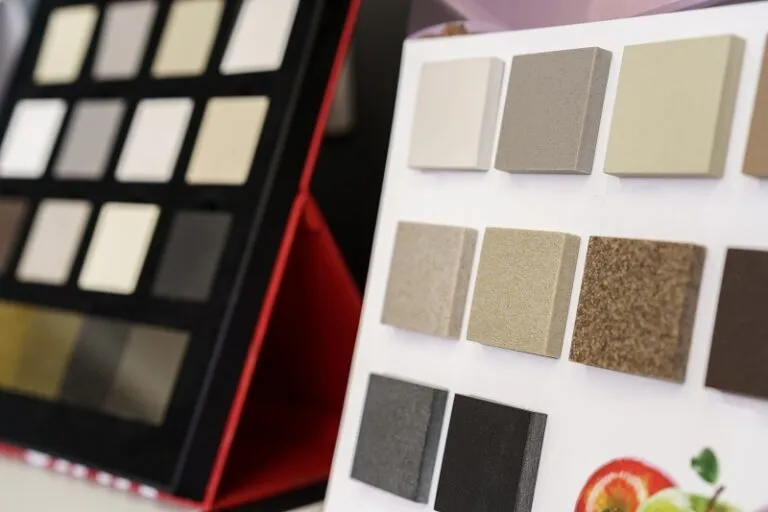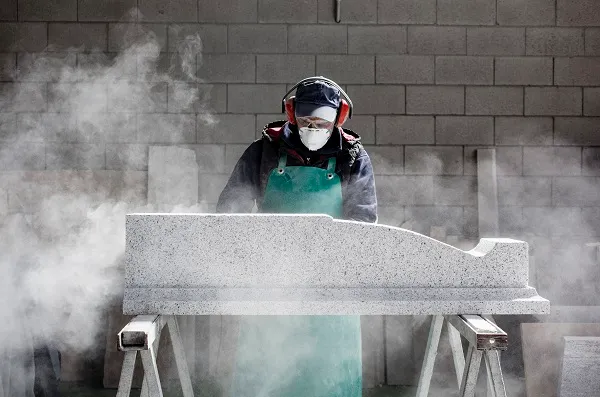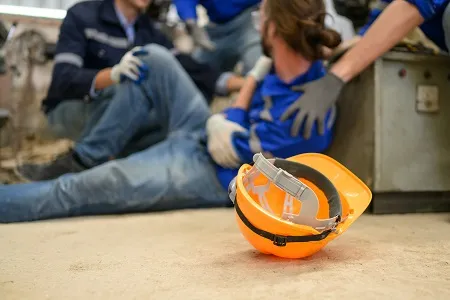From 1 January 2025, it will be illegal to import engineered stone benchtops, panels or slabs into Australia unless:
- The Commonwealth Work Health and Safety Minister or an authorised person gives written permission for genuine research, testing or other special reasons.
- A State or Territory authority, or Comcare, confirms in writing that the import is for genuine research, testing or identification.
- The import is allowed under an exemption given by the Work Health and Safety Regulations 2011 (Cth), or a similar state or territory law.
As of 1 July 2024, it is already illegal to use, supply or make engineered stone benchtops, panels and slabs.
In South Australia, there are temporary rules that allow existing contracts signed on or before 31 December 2023 to go ahead, as long as the work is finished by 31 December 2024.
You can still work on already installed engineered stone if you need to remove it, throw it away, repair it or make small changes. However, you must tell SafeWork SA and follow strict safety rules, which got tougher from 1 September 2024.
Engineered stone has high levels of a kind of dust called respirable crystalline silica.
Breathing this dust can cause serious lung diseases like silicosis, as well as lung cancer, kidney problems and some autoimmune diseases.
The Australian Ban on Artificial Stone: A Turning Point in Occupational Health and Safety
In recent years, Australia’s construction and home renovation industries have grappled with a significant occupational health threat: the serious and often irreversible lung diseases linked to cutting and polishing artificial stone, commonly known as engineered stone. Growing evidence and a rising tide of affected workers have propelled to an outright ban on these materials. Understanding why this ban is tooking place —and what it means for industries, workers and consumers—is essential as Australia stands at the threshold of a major regulatory shift.
What is Artificial (Engineered) Stone?

Artificial stone, or engineered stone, is a composite material often used for kitchen benchtops, bathroom vanities and other interior finishes. Made primarily from crushed quartz — one of the hardest minerals on Earth — these surfaces combine natural stone chips with resins, pigments and other binding agents. The result is a durable, attractive product that can mimic the aesthetics of marble or granite at a lower cost and with greater design flexibility.
These benefits propelled engineered stone to popularity throughout Australia’s booming home improvement market. However, the very properties that make engineered stone so appealing — its hardness and high quartz content — also create deadly risks when workers cut, grind or polish these surfaces. This process generates fine dust that can be easily inhaled, causing severe respiratory issues.
The Health Hazard: Silicosis and Beyond
At the centre of the push to ban artificial stone lies the health crisis affecting stonemasons, fabricators and construction workers. When these tradespeople manipulate engineered stone, they release high levels of crystalline silica dust. If inhaled, even in small quantities over time, this dust can scar the lungs, leading to silicosis — a progressive and incurable lung disease. In advanced cases, silicosis can cause chronic breathing problems, reduced lung function and can be fatal.
The scale of the problem is alarming. Silicosis has re-emerged in Australia as a serious occupational disease, often diagnosed in relatively young workers. The latency period (the time between exposure and disease onset) can be as short as a few years if exposure levels are high enough. Beyond silicosis, silica exposure is linked to lung cancer, chronic obstructive pulmonary disease (COPD) and kidney disease. The human toll is profound: workers lose their quality of life, face steep medical costs and may no longer be able to continue their chosen profession.
Rising Awareness and Public Outcry
Australia’s building and construction unions have sounded the alarm on this issue for several years, working alongside health advocates, medical professionals and worker advocacy groups. Stories of young tradespeople forced out of their jobs and struggling with debilitating respiratory illnesses have caught the attention of the public and policymakers. In some states, governments introduced stricter regulations to reduce exposure, such as requiring tools with better dust suppression and mandatory personal protective equipment (PPE).
However, as these measures have proved insufficient to stem the tide of disease, there was a growing momentum for more drastic action — namely, a national ban on the importation, manufacture and sale of high-silica engineered stone products.
Industry Response and Regulatory Landscape
The artificial stone industry and related businesses — f bricators, retailers and importers — have found themselves under intense scrutiny. While some industry stakeholders initially resisted calls for stricter regulations, claiming that existing safety measures could be improved, the rising cases of silicosis made it harder to argue against stronger intervention.
In February 2023, federal and state ministers across Australia agreed that action was needed. Safe Work Australia was tasked to investigate the feasibility and impact of banning engineered stone containing high levels of crystalline silica. The inquiry included extensive consultation with industry representatives, unions, occupational health experts and affected workers. By late 2023, the consensus was solidifying: to protect workers’ health, a ban on high-silica engineered stone was both necessary and urgent.
What the Ban Entails?
The Australian ban is targeting engineered stone products that contain high concentrations of crystalline silica. Many popular engineered stones contain upwards of 90% silica, a level considered extremely hazardous if proper controls fail. The ban involves:
Import Restrictions: Stopping the import of engineered stone products with silica content above a specified threshold. This would limit the supply of high-risk materials at their source.
Manufacturing Bans: Prohibiting domestic production of engineered stone that exceeds set silica content standards. This would encourage the development of safer alternatives with lower silica content.
Sales and Installation Limits: Preventing new installations of banned materials. Existing benchtops and surfaces already installed in homes and businesses may be grandfathered in, though some property owners might voluntarily replace them for health reasons.
Enforcement and Penalties: Heavy penalties for businesses that continue to import or install prohibited materials. Enhanced regulatory oversight would ensure compliance across supply chains.
Economic Implications

The ban raises several economic questions. Engineered stone has become a popular choice for homeowners and renovators due to its combination of durability, aesthetics and relative affordability compared to natural stone alternatives. A ban on high-silica engineered stone could initially drive up costs as the market adjusts to safer materials — such as lower – silica engineered stone, porcelain, sintered stone or natural stone alternatives.
For the businesses involved, this shift could mean diversifying product lines, investing in safer production methods or pivoting towards new materials altogether. In the short term, some firms could experience reduced sales and job losses as they adapt. However, a successful transition might open new markets for innovative, health-conscious products, attracting customers who value safety and sustainability.
Worker Retraining and Industry Transition
One of the critical considerations in implementing a ban was supporting the workers currently employed in the fabrication and installation of engineered stone. With artificial stone accounting for a large segment of the kitchen and bathroom renovation market, many skilled tradespeople have built their careers around working with these materials.
Retraining programs that might include the use of online induction system Induct For Work, and transitional support will be the key. The government, industry associations and unions are discussing pathways for workers to shift their expertise to safer materials. This may include subsidised training courses, government grants to help small businesses invest in new technology or tools for safer materials and job placement assistance. Ensuring that workers can adapt their skills not only minimises the economic shock but also emphasizes that the ban is fundamentally a public health measure, not simply a punitive action against certain products.
Consumer Impact and Awareness
For Australian consumers, the ban represents an opportunity to reevaluate the priorities that guide home improvement decisions. Price, appearance and durability have long been top considerations. The engineered stone crisis highlights the importance of considering the full lifecycle of a product, including how it affects the people who manufacture and install it. Consumers may become more aware of occupational health and safety issues, asking more informed questions and making more ethically guided choices.
In the short term, homeowners may face higher costs or reduced availability for their preferred benchtop materials. Over time, however, market forces — driven by innovation and competition — could yield new products that combine aesthetics, durability and safety without the hidden health costs.
Lessons Learned
Australia is not alone in grappling with the dangers of silica exposure in the workplace. Countries like Spain and parts of the United States have also reported alarming rates of silicosis among workers who handle engineered stone. Australia’s move to ban these products puts it at the forefront of addressing a world wide issue.
By taking decisive action, Australia sets a precedent that other nations may follow. The ban may prompt international manufacturers to adjust their product lines or invest in research and development of safer materials. If successful, Australia’s example will demonstrate that worker health can trump market inertia — and that public policy can intervene when a popular product turns out to carry unacceptable risks, similar to asbestos.
Advocacy, Research and the Road Ahead
Ongoing studies into safer production techniques, dust suppression technologies and health outcomes among workers are vital. Monitoring the impact of the ban — on worker health, market dynamics and consumer behavior —will guide future decisions. If the ban effectively reduces new silicosis cases and improves workplace safety, it may inspire similar regulatory steps against other hazardous materials or processes.
A Defining Moment in Occupational Health
The Australian ban on artificial stone, when fully implemented, will mark a turning point in the nation’s approach to occupational health and safety. It signals that when a product’s risks to human life and well-being become too great, policy-makers are prepared to intervene decisively. In doing so, Australia acknowledges that the cost of a benchtop extends far beyond its purchase price — it can also be measured in the safety of the workers who create it.
This shift also encourages a more holistic perspective on home improvement and construction. No longer can we view countertops, flooring and other interior elements purely in terms of surface-level qualities. Instead, health considerations and ethical supply chains will become integral to a product’s value proposition.
For workers, the ban represents a long-overdue acknowledgment of their right to a safe workplace. For consumers, it provides a push to consider alternatives that don’t come at the expense of someone else’s health. And for the country as a whole, it is a reminder that progress often entails recognizing when something that seemed beneficial—like engineered stone — carries hidden costs too high to ignore.
As Australia moves closer to eliminating high-silica engineered stone from its market, it stands as a model for how nations can confront and overcome occupational health crises. The lessons learned here will shape policies, products and workplaces for years to come, ensuring that human well-being remains at the forefront of progress.



